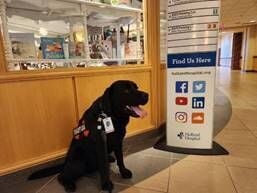On October 23, 2025, the Whiting School of Engineering’s Department of Computer Science hosted a presentation by Aaron Roth, a professor of computer and cognitive science at the University of Pennsylvania. His talk, titled “Agreement and Alignment for Human-AI Collaboration,” explored innovative strategies for enhancing decision-making processes through artificial intelligence.
Roth’s presentation highlighted findings from three significant papers: “Tractable Agreement Protocols,” presented at the 2025 ACM Symposium on Theory of Computing, “Collaborative Prediction: Tractable Information Aggregation via Agreement,” and “Emergent Alignment from Competition,” both of which were featured at the ACM-SIAM Symposium on Discrete Algorithms. The growing presence of artificial intelligence across various sectors raises important questions about its role in assisting humans with critical decisions.
Using the example of AI in medical diagnostics, Roth illustrated how AI can support doctors in identifying patient conditions. The AI generates predictions based on data such as previous diagnoses, blood types, and symptoms. Following this, the physician evaluates the AI’s recommendations, contributing their own insights, which may include observations about the patient’s physical appearance.
In situations where disagreements arise between the AI and the physician, Roth explained that both parties can engage in a process of reiteration. This exchange occurs over a finite number of rounds, allowing each side to integrate the other’s perspective until a consensus is reached. This collaborative agreement is founded on the concept of a common prior, meaning both the AI and the doctor share the same fundamental assumptions about the world, despite having access to different pieces of evidence.
Roth refers to this process as Perfect Bayesian Rationality. Each party recognizes that the other possesses knowledge they do not, facilitating a more informed decision-making process. Although this theoretical framework holds promise, Roth cautioned that establishing a common prior can be challenging, particularly in complex scenarios involving multi-dimensional data, such as hospital diagnostic codes.
Roth introduced the concept of calibration as a means to enhance agreement between humans and AI. He explained calibration through the analogy of weather forecasting, where the accuracy of predictions can be tested. “You can sort of design tests such that they would pass those tests if they were forecasting true probabilities,” he noted. In the context of doctor-AI interactions, he proposed a form of conversation calibration. For instance, if an AI assesses a treatment risk at 40% and the doctor estimates it at 35%, the AI would adjust its next prediction based on the doctor’s assessment. This iterative process continues until both parties arrive at a mutually agreeable conclusion.
However, Roth highlighted that alignment is not guaranteed, particularly when AI systems may have competing interests. For example, an AI developed by a pharmaceutical company might favor its own products when recommending treatments. In such cases, Roth recommended that doctors consult multiple large language models (LLMs) from different sources. This approach would allow physicians to compare recommendations, ultimately fostering a competitive environment among AI providers that could lead to less biased and better-aligned models.
Roth concluded his presentation by discussing the concept of real probabilities—those that accurately reflect the complexities of the world. While precise probabilities are ideal, he emphasized that practical applications often require probabilities to remain unbiased within specific contexts. By leveraging data effectively, doctors and AI can collaborate to reach agreements on diagnoses and treatments, enhancing patient care.
The insights shared during Roth’s talk underscore the potential for AI to augment human decision-making, provided that both parties engage in a thoughtful and collaborative manner.








































































